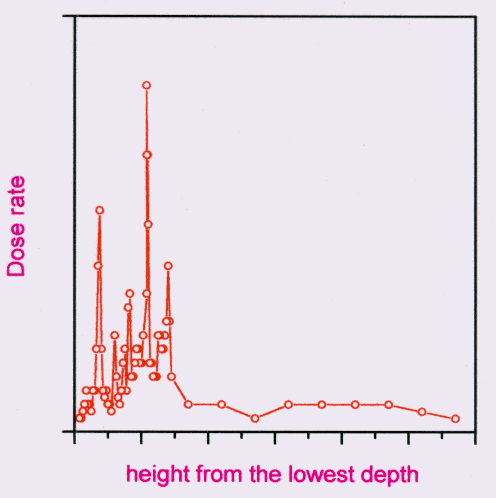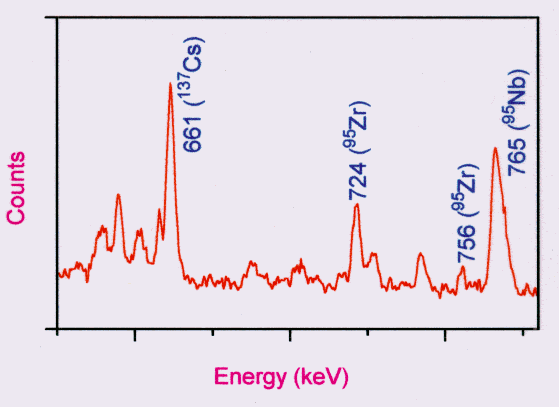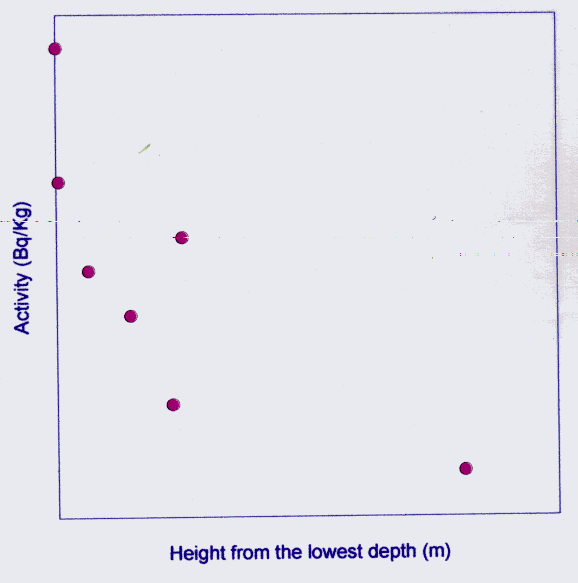
Five Nuclear Tests conducted during May 11-13, 1998 at Pokhran, Rajasthan, included three sub-kiloton devices in addition to a thermonuclear device and a standard fission device. One sub-kiloton device was tested on May 11, while on May 13, two sub-kiloton devices were tested. This report gives some of the results of gamma radiation logging measurements in bore holes at the sites of sub-kiloton tests as well as the post-shot radioactivity measurements on the samples extracted from these sites.
Gamma Radiation Logging
Gamma radiation logging was carried out in the bore holes drilled at each of the test sites. The equipment used for this purpose was developed in Radiation Safety Systems Division, BARC. The equipment consisted of a measuring unit and detector probe unit coupled by long cable wound on a cable winch. The main detector probe consisted of two energy compensated GM tubes to cover six decades of range from 2 m Gy/hr to 200 mGy/hr Full Scale Division (FSD). Necessary preamplifier for driving the signal through the long cable was provided inside the probe unit itself. The measuring unit incorporates necessary high voltage supply for detectors, count rate meter, scaling circuits and an audio circuit. All the readings were displayed by linear 50 division meter. The audio facility was quite useful to monitor the health of the instrument during logging. Before and after each logging, the instrument was checked with a test source. The instrument was initially calibrated at BARC for all the ranges at different points in each range using various source strengths.
These measurements have
shown the presence of gamma emitters at all the test sites. Figure 1 gives
the variation of gamma dose along depth for 0.5 kt device test site.
 |
| Fig. 1 Gamma dose rate at the test site of 0.5 kiloton device of May 13, 1998 |
The samples extracted
from boreholes at all test sites were assayed for radioactivity content
at Environmental Assessment Division. Samples were powdered and dried.
The homogenised samples were stored in plastic containers of 8 cm height
and 7 cm diameter. For the assessment of radionuclides, two high resolution
gamma-ray detectors, having efficiency of 20% and 30% respectively with
respect to a 7.5 cm X 7.5 cm NaI(Tl) detector coupled with 8K Gamma Spectrometer,
were used. Standard 152Eu sources were used for efficiency calibration
of the detectors in the specified geometry. Figure 2 gives a typical gamma
spectrum of a sample collected from 0.3 kt device test site. The spectra
clearly shows the presence of fission products such as 137Cs,
95Zr and 95Nb. Data on large number of such samples
drawn from various depths have been recorded for further analysis. Figure
3 shows the variation of 137Cs activity with height from the
lowest point for 0.2 kt device test site.
 |
|
|
 |
|
|
Acknowledgements
The authors would like to express their thanks to colleagues from Atomic Minerals Directorate for Exploration & Research, Repository Projects Section, BARC, the Army and team of health physicists who carried out the drilling operation and collection of samples.
The authors acknowledge with thanks the useful discussions with Dr. S.K. Sikka and Dr. B.S. Tomar. We express our gratitude to Dr. R. Chidambaram for his keen interest and encouragement during this work.